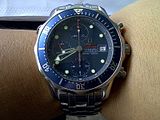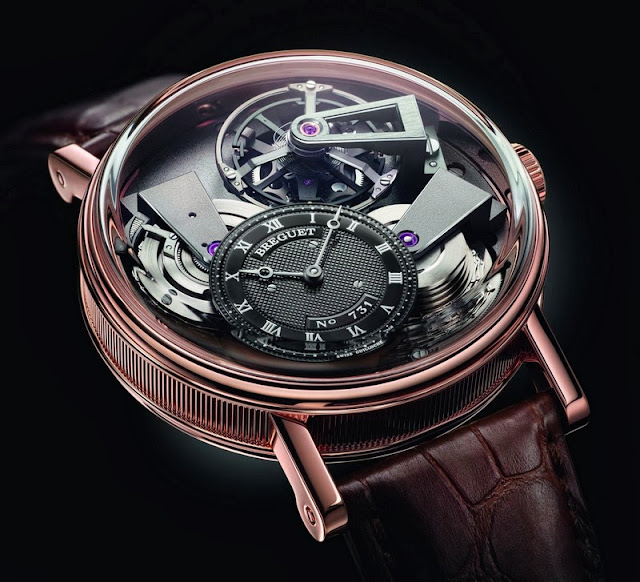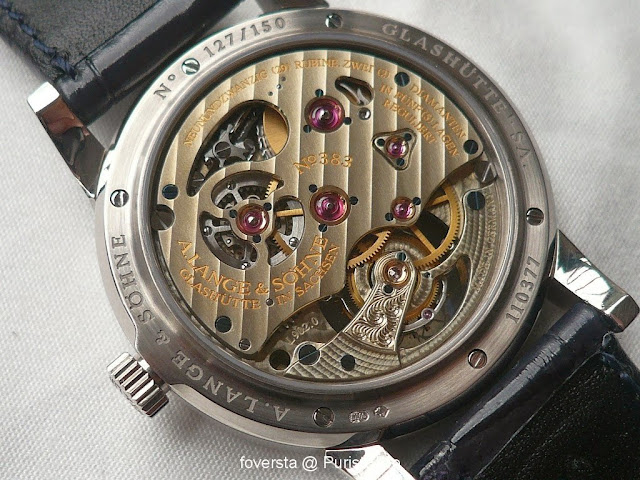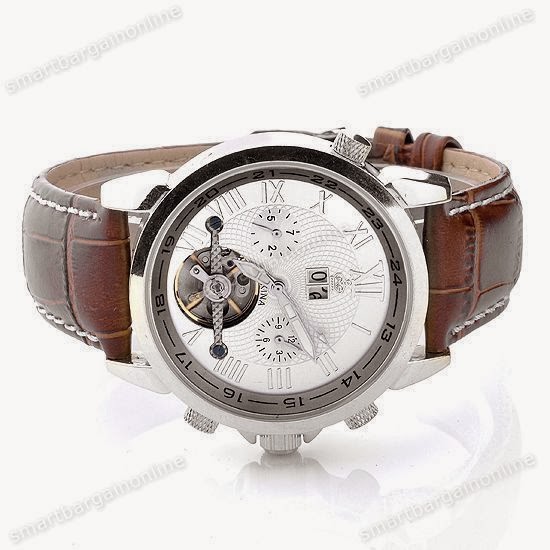Tourbillon
History
The tourbillon history is an
intriguing and thought-provoking one. Along with minute repeaters, grande and
petite sonneries, perpetual calendars, and chronographs, the tourbillon is one
of the most fascinating complications of mechanical horology. Priced out of the
reach of all but a lucky few, the tourbillon is rarely seen up close and
personal but most often seen in pictures. Once viewed, however, one cannot help
but be seduced by the stately and measured dance of the tourbillon
("whirlwind" in French).
The tourbillon history dates back to
the 18th century. The invention of the tourbillon, or tourbillon regulator stem
from the days of the pocket watch and came about as a result of men's quest for
improved accuracy of marine chronometers, a chronometer being a high precision
watch. 18th century sailors on the high seas literally depended their lives on
the accuracy of their ship's deck watch or these marine chronometer to steer them
on course and out of harm's way. The quest for accuracy was obvious and did not
end there - after all this was a time of continual innovation and invention in
horology, the start of the tourbillon history being just around the corner. As
a chronometer would almost invariably rest in the same position, gravity was a
directional constant affecting the behavior of the chronometer's balance wheel
and balance spring. In fact, the influence of gravity on the accuracy of
mechanical watches had worried watchmakers for centuries. How is this so?
Depending on
the position of the watch in the vertical plane (crown left; right; down; or
up), different variations in the frequency of the balance wheel will occur as a
result of changes in its center of gravity. For when a watch is in the vertical
position, the earth's gravity either accelerates or slows the balance and the
escapement (mechanism in the watch that regulates the speed of rotation of the
wheels), causing a rate gain or loss. Even a watch in excellent condition that
has been recently lubricated, serviced, and adjusted for temperature variations
will still suffer the inevitable influence of the gravitational force of the
Earth.
To nullify
the effects of gravity in pocket watches, the great French watchmaker Abraham-Louis
Breguet invented the tourbillon in 1795, propelling the tourbillon history.
But his
invention became known officially only in 1801 when he applied for a patent.
The first pocket watch equipped with a tourbillon mechanism was sold in 1805 but
it was presented formally to the public during the Parisian show of French
industrial products in 1806.
Remember now
that the tourbillon is a holdover from the days of the pocket watch. One
chapter in the tourbillon history evidences that the tourbillon regulator made
the jump to wristwatches starting in 1930. Unlike a wristwatch, a pocket watch
worn in a vest will spend the majority of its time in a vertical position.
Therefore, Breguet allegedly decided that, for the absolute best accuracy, some
means of balancing out the effects of gravity in the various positions was
needed. His ingenious solution placed the balance wheel, escape lever, and
escape wheel in a cage, which then rotated a full 360 degrees making a complete
revolution around itself, usually in a minute. In this way, the overall effects
of gravity get balanced out, as the escapement of the movement never spends any
significant time in one vertical position.
To
demonstrate the functional principle of the tourbillon, an example is shown
below:
Assume a
watch with the following daily rates: crown down (-2 seconds); crown up (+2
seconds); crown left (0 seconds); crown right (0 seconds).
This watch,
placed in the "crown down" position over a period of 4 days would
lose 8 seconds. After another 6 days in the "crown up" position would
advance it 12 seconds. It's simple to see that after the 10 day period, the
watch will have gained a total of 4 seconds as compared to day 0.
Day
|
Position
of Crown
|
Daily
Rate
|
Daily
Variation
|
1
|
Down
|
-2
|
-2
|
2
|
Down
|
-2
|
-4
|
3
|
Down
|
-2
|
-6
|
4
|
Down
|
-2
|
-8
|
5
|
Up
|
+2
|
-6
|
6
|
Up
|
+2
|
-4
|
7
|
Up
|
+2
|
-2
|
8
|
Up
|
+2
|
0
|
9
|
Up
|
+2
|
+2
|
10
|
Up
|
+2
|
+4
|
Now, what
would happen to the same watch if a tourbillon was installed in it? It is also
simple to see that this watch would not suffer any variation, since the crown
up and crown down positional errors would continually cancel each other out
throughout the day (2 second - 2 second = 0 second). The positions crown left
and right did not cause variation in this example).
Day
|
Position
of Crown
|
Daily
Rate
|
Daily
Variation
|
1
|
Down
|
0
|
0
|
2
|
Down
|
0
|
0
|
3
|
Down
|
0
|
0
|
4
|
Down
|
0
|
0
|
5
|
Up
|
0
|
0
|
6
|
Up
|
0
|
0
|
7
|
Up
|
0
|
0
|
8
|
Up
|
0
|
0
|
9
|
Up
|
0
|
0
|
10
|
Up
|
0
|
0
|
The tourbillon, therefore, tends to compensate for errors
that occur as a result of the position of the watch, thereby increasing its
accuracy.
One chapter in the tourbillon history that begun with Breguet
has been written; but the pursuit for sophistication, horological excellence
and high aesthetics is not over yet... Another chapter of the tourbillon
history is currently being written by contemporary watchmakers coming up with
complicated tourbillon inventions such as the flying tourbillon and the double
axis tourbillon outperforming and in some cases outshining the traditional
Breguet-type tourbillons.
The year 2001 marked the 200th anniversary of the tourbillon.
Stay tuned for more tourbillon history ...
Anatomy of a Tourbillon Parts
Hajime Asaoka & Takashi Murakami
Voutilainen
Xeric
Breguet
Tourous
Concord
Harry Winston
Cartier
Romain Jerome
Chopard
Bvlgari



































.JPG)
















































 Vacheron Constantin
Vacheron Constantin

















.jpg)
.jpg)



































































































Tidak ada komentar:
Posting Komentar